Italy & France Trip Sep18 to Oct2,2018 part 2 France
- alainaa2

- Aug 25, 2019
- 11 min read
Sep 28,2018 in Baux-de-Provence, France.
I like to call this the Cave of Lights but it's real name is called Carrières de Lumières. I had the privilege of seeing this on both trips.
2015 Trip
2018 Trip
Short video clip
Sep 30, 2018
Paris,France
My dad was going to be flying up to Paris to head back home. So we decided to leave early with him, and take a train up to Paris. We had one night with dad before he heads back to the states.
That night we went to the "Lido De Paris" for dinner and a show. OMG this was amazing will give any play in Las Vegas run for its money and loose big time.
Short video clip
Oct 1, 2018
The Louvre
With dad gone Mom and I decided to go see museums. The first Museum is "The Louvre" we where able to get pre-addition at a designated time. It is so worth the extra cost not to stand in the long line.
{ It makes me so sad that I lost all my phots from the Louvre only have hand full on my phone.}
Did you know:
Mona Lisa is not her real name. Her name is Lisa Gherardini, she was the wife of Francesco del Giocondo. Leonardo would call her My Lady Lisa.
She lived with Francois I,and Louis XIV - Although da Vinci began work on his masterpiece while living in his native Italy, he did not finish it until he moved to France, at King Francois I's request. The French king displayed the painting in his Fontainebleau palace where it remained for a century. Louis XIV moved it to Palace of Versailles.
Napoleon Bonapart had a crush on her- the French Emperor had her hanging on the walls in his bedroom in there Tuileries Palace for almost four years beginning in 1800. He once said the painting inspired his affection for a Italian woman her name was Teresa Guadagni she was a descendent of Lisa Gherardini.
Mona Lisa was painted on a wood panel 30 inches by 21 inches and weighs 18 pounds.
Her eyebrows or the lack of, some think it represents the High class fashion of the times, other that its proof the painting was unfinished. In 2007 a ultra-detailed digital scan was done and found the eyebrows and eyelashes had faded over time and Leonardo had once painted them.
Men have died for loving the portrait, first in 1852, Luc Maspero jump from the 4 floor leaving a suicide note " For years I have grappled desperately with her smile. I prefer to die". In 1910 one enamored fan was standing before the portrait and shoot himself as he looked at the painting.
The painting is now over 500 years old.
Lisa was stolen from the Louvre on August 21, 1911.
France mourned her when she went missing.Thousands poured into the Louvre to stare in shock at the blank wall where she once hung and leave flowers, notes, and other remembrances.
Pablo PicassoI was a suspect in the stealing, because he'd been caught buying stolen Louvre pieces before, Pablo Picasso was brought in for questioning. But the true thief would not be caught until 1913.
Louvre employee Vincenzo Peruggia was a proud Italian nationalist who smuggled the painting out under his smock because he felt it belonged to his and da Vinci's homeland, not France. After hiding it for two years, Peruggia was busted trying to sell Mona Lisa to a Florence art dealer. However, he did briefly get his wish. Upon her recovery, Mona Lisa toured Italy before returning to Paris.
When painting the Mona Lisa, Leonardo da Vinci had six musicians play for her and installed a musical fountain he invited himself. He did all this because he wanted to keep his subject relaxed and entertained.
During World War II, the Mona Lisa was moved 6 times so it can be kept out of the hands of the Nazis.
The Mona Lisa has been attacked in the Louvre! Look closely at the lisa's left elbow, you might notice the damage done by Ugo Ungaza Villegas, he chucked a rock at the portrait in 1956. A few months before that happened, another art attacker pitched acid at the painting, which hit the lower section. Then again in 2009 a ceramic mug hurled by an enraged Russian woman who'd been denied French citizenship.
Oct 2, 2018
The Petit Palais
The next stop and wow what amazing art. When I think of all the phots I lost on top of losing my camera it still stings. We were here during fashion week. So not only did I have photos of the amazing art work but also outfits people had on to go see the cat walk. We got to meet up with our friend Jocelyn for dinner that night.
Did you know: World Fair officials liked the plan because it dealt with what they viewed as an eyesore. One of the leftover buildings from the 1855 World Fair, the Palais de l’Industrie, ran parallel to the Champs Élysées and blocked views of Les Invalides (where the tomb of Napoleon resides). So when it was suggested to demolish it and build two palaces that fit with the new development plans for Paris, officials gave the green-lit to the project. That is how we got the Petite and Grand Palais.
Oct 3, 2018
Musée d'Orsay and River Cruse
I have more photos of this because I love Vincent Van Gogh (my fav artist) so had to do selfies and other artist's. This will be the night I lost my camera. Thank goodness for my selfies or I would not have any photos.
Did you know:
1) Musée d'Orsay was a train station before it was a museum
2) Musée d'Orsay was almost demolished in 1970 for a hotel
3) Musée d'Orsay used more metal than the Eiffel tower
4) Musée d'Orsay has at least 35,000 square meters of glass
Oct 7-10, 2018
Walking around Axi-de-Provance
We arrived in Axi and ordered a new camera to replace the one that went missing last night in Paris, so we just did shopping and relaxed and waiting for new camera to come in.
Oct 11, 2018
Marchutz Art School Seminar and watercolor class in Lambesc.
Oct 12, 2018
Marchutz field trip to Arles for Vincent Van Gough
Vincent spent some time in Arles and we walked in his foot steps. I will pre-apologize for my over enthusiastic on this subject I promise I'll try to reigned it in.
Amazing webpage to find info about his painting and his live.
Painting #1 Bridge of Langlois
The Marchutz professor gave a lecture at each location. The first six photos are from this trip. The last three photos are from back in 2015.
Did you know: The bridge was replaced in 1930 by a reinforced concrete one, which was destroyed by the Germans in the WWII. A replica of the one Vincent painted stands a few kilometres south of the original location.
Painting #2 Alyscamps Arles, France
Vincent made four paintings at Alyscamps. He did this painting in late October 1888. You will see Vincent's painting along other paintings done with other impressionist artists such as Paul Gauguin and Paul Signac, painting the same subject.
Painting #3 Hospital Arles, France
This Painting is called "Ward in the Hospital",1889. Photo's 10-13 are photos from trip back in 2015.
December 23,1888 after cutting off part of his ear and giving it to a prostitute he was in love with in a fit of madness. Vincent was admitted to hospital in Arles. He was treated by Dr Félix Rey. The doctor wanted him transferred to an asylum in Marseille where he could receive better care. The hospital in Arles was only treating his ear and not address his mental problems.
During his stay in hospital, he painted many landscapes, along with works like Ward in the Hospital and The Courtyard of the Hospital. He was sometimes allowed to go into town, for instance when his friend Paul Signac came to visit.
The illness made Vincent anxious and insecure. He became convinced that it would be better for him and for others if he continued to live apart from society for a while. Thus, on. May 8 1889, he had himself committed to the Saint-Paul de Mausole asylum in Saint-Rémy de Provence.
Painting #4 The Trinquetaille Bridge.
The Trinquetoille Bridge that appears in this painting was an angular metal structure that spanned the river and joined the two sides of the town. The geometric pattern of the bridge in relation to the steps afforded Van Gogh a new and interesting subject to paint, and the subject of bridges was one that he referred to several times during this period. In this painting a slight murky quality is evident in his colors, and this is something he increasingly employed. Interestingly, although the bridge has since been rebuilt, there is a large tree now growing where the sapling appears in Van Gogh's painting. Last painting was done by another artist of same bridge but in the Japanese style.
Painting #5 Café Terrace
(Not on the Marchutz tour photo 1-5 was on that trip the rest was from the trip from 2015.)
September 1888, Vincent painted the world-famous Café Terrace at Night.
From part of a letter Vincent wrote: But I find that it suits me to paint the thing straightaway. It’s quite true that I may take a blue for a green in the dark, a blue lilac for a pink lilac, since you can’t make out the nature of the tone clearly. But it’s the only way of getting away from the conventional black night with a poor, pallid and whitish light, while in fact a mere candle by itself gives us the richest yellows and oranges. One of his night paintings.
Painting #6 The Arena at Arles
(Not on the Marchutz tour)
Vincent went a few times to the bullfights that were held every Sunday in the Arles arena. According to Vincent, although things sometimes went wrong, it was not much of a problem for the spectators, since the amphitheatre had been designed so that the seats were high up. Vincent was impressed by the crowds that flocked to see the bullfights. (I Don't like killing the bulls and when I asked about it found out they don't kill or hurt the bulls)
Painting #7 Starry Night Over the Rhone
(Not on the Marchutz tour but walked pass it. The first three photos are from this trip and last three my trip back in 2015.)
Ever since Vincent arrived in Arles, he was constantly pre-occupied with the re-presentation of the "night effects". He wrote a letter to his brother Theo: "I need a starry night with cypresses or maybe above a field of ripe wheat." and in June, he confided to the painter Emile Bernard: "But when shall I ever paint the Starry Sky, this painting that keeps haunting me".
Starry Night Over the Rhone was painted at a spot on the banks of river which was only a minute or two's walk from the The Yellow House on the Place Lamartine which Van Gogh was renting at the time. The challenge of painting at night intrigued Vincent. The vantage point he chose for Starry Night Over the Rhone allowed him to capture the reflections of the gas lighting in Arles across the glimmering blue water of the Rhone river. In the foreground, two lovers stroll by the banks of the river. Here his stars glow with a luminescence, shining from the dark, blue and velvety night sky. Dotted along the banks of the Rhone houses also radiate a light that reflects in the water and adds to the mysterious atmosphere of the painting. His second night painting.
Did you know:
1) "Starry Night Over the Rhone" was part of the 1889 Society des Independents exhibition in Paris. Only a few of Vincent artworks were shown publicly prior to his death. 2) Van Gogh completed the painting in September 1888 while in Arles but before entering the mental asylum at Saint-Remy where he would paint Starry Night. 3) Unlike Starry Night and Café Terrace at Night, "Starry Night Over the Rhone" was inaccurate in its placement of the Big Bear constellation in the heavens. 4) The gas lights and their reflections in the river were a relatively new thing in Arles. Paris itself had only been lit at night since around 1853.
Painting #7 The Yellow House
(Not on the Marchutz tour but walked pass it)
The first 9 photos were from the trip in 2015, the last 1 was from this trip. After the Night Over the Rhone stop. The last two photos of the bridge and the yellow house where bombed during WW II. The yellow house was completely destroyed and only parts of the bridge remain.
Vincent wanted to turn the yellow house into a “studio of the south” where artists could live and work together.
He created a number of works for the purpose of decorating the house; they included four sunflower paintings, The Public Garden with a couple strolling, The Tarascon Stagecoach, The Night Café, The Yellow House (“The Street”), Starry Night over the Rhône and The Trinquetaille bridge.
Vincent was admitted to hospital after cutting off part of his ear, in this house. Meanwhile, the neighborhood residents were in revolt: they considered Vincent a threat and sought to have him sent to an asylum. Though they did not get their wish, Vincent was sent back to hospital. Vincent’s mental illness had spoiled his plans to establish the “studio of the south”, and he decided to move out of the Yellow House. On April 30, as he was packing up paintings to be sent to Theo, he discovered that a number had become damaged by flooding; one was The Bedroom, which he had been greatly pleased with. On May 8, Vincent left Arles for Saint-Rémy, where he was voluntarily committed to the Saint-Paul de Mausole asylum.
I found these photos in the bar, in the building that was behind the yellow house. All photos from my 2015 trip. You can see the missing yellow house and the bridge that was destroyed and other locations.
Montmajour Arles, France
This was first location that was not a painting but a pencil,pen and ink Drawing" La Crau Seen From Montmajour", on July 13,1888.
Vincent made countless trips to Montmajour, a hill with an abbey on top a few kilometres northeast of the city centre. He discovered it two weeks after his arrival in Arles while exploring the surrounding countryside and he expressed the desire to go there soon to paint. Vincent considered the hill beautiful, with its abbey and its view over the flat landscape.
The stiff wind forced Vincent to concentrate on drawing rather than painting: when he set up his easel, the wind would blow the canvas over. The drawings Vincent did on Montmajour, mostly using a reed pen, are some of his best.
This is a Japanese style drawing. He used a wide variety of strokes, dots and crosses to emphasize the flatness of the landscape. He wrote to his friend, the artist Émile Bernard another artist friend, 'It does NOT look Japanese, and it's actually the most Japanese thing that I've ever done.'
Saint-Paul-de-Mausole
Saint-Rémy, France
Vincent came to Saint-Remy de Provence on May 8, 1889 to be voluntarily committed to the Saint-Paul de Mausole psychiatric institution, which was housed in a former monastery. He had suffered a series of severe breakdowns and believed he should be institutionalized for his own sake and that of others. He received good treatment from his doctor Théophile Peyron. Vincent did not have a psychiatric illness but was suffering from epilepsy. He was prescribed two hours of alternating hot and cold baths twice a week used to treat mental illness in the 19th century.
In late December, Vincent had another psychotic episode, in which he went completely out of his mind, eating refuse off the ground and attempting to poison himself by ingesting paint and lamp oil. Vincent’s attacks often left him unable to work for long periods. In February and March, he suffered two more breakdowns. He decided to leave for northern France to escape the climate and get away from the other mental patients. Dr Peyron pronounced him cured, and on May 16, 1890 Vincent left for Auvers-sur-Oise to live on his own under the supervision of another doctor.
Photo 1 to 9 is from this trip, the rest are from my trip back in 2015. Photos 10 to 16 from this trip 2018
That is the end of this part. I know it is long but trust me I made it much much shorter than it was. Just be happy I did not go in to for each painting from all the paintings image from the lost camera from the art museums in Paris.
Oct 13-16, 2018
Had relaxing days by the pool, shopping, more watercolor painting, just doing this and that, dinner with our friend Amy and {her family} Amy is a professor at IAU her class is Global Wine Studies. Off to Paris we go.
More to come later...







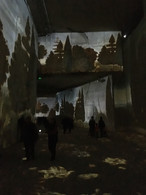















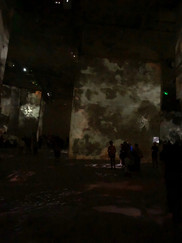



































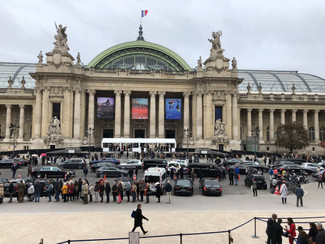





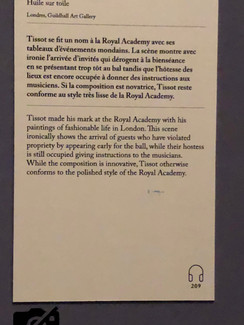














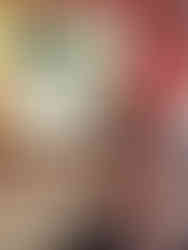













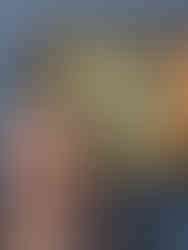
























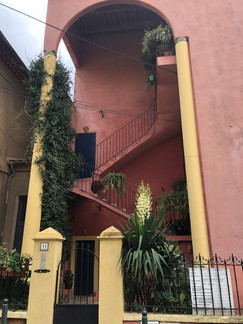













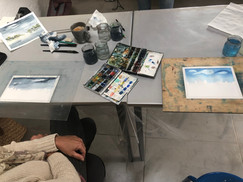
















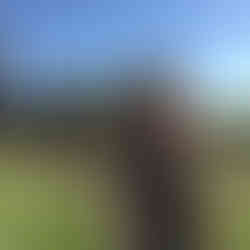




















































































































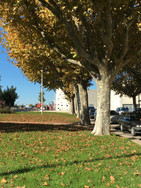
















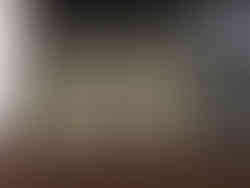








































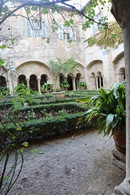

















































Comments